Running a steel mill in Brazil presents a unique set of challenges. I know this because I’ve spent my life in the packing machine industry, first as an engineer and now as a factory owner. I’ve seen firsthand how Brazil's climate—the high humidity, the dust, and the intense heat—can wreak havoc on essential equipment. A standard coil packaging line that works perfectly in a milder climate can quickly become a source of constant breakdowns and frustration in your mill. This leads to corroded coils, damaged products, and costly production delays. You end up fighting daily operational fires instead of focusing on long-term growth and profitability. But it doesn’t have to be this way. By choosing the right equipment and strategy, you can turn these environmental challenges into a competitive advantage.
To improve coil packaging efficiency in Brazil’s harsh industrial environments, you must invest in robust, customized machinery. This means using corrosion-resistant materials like stainless steel and specialized coatings. It requires integrated automation to reduce manual handling and minimize human error. Most importantly, it involves using smart sensors for predictive maintenance. This combination ensures your packaging line performs reliably and consistently, even in the face of extreme humidity, abrasive dust, and high ambient temperatures.
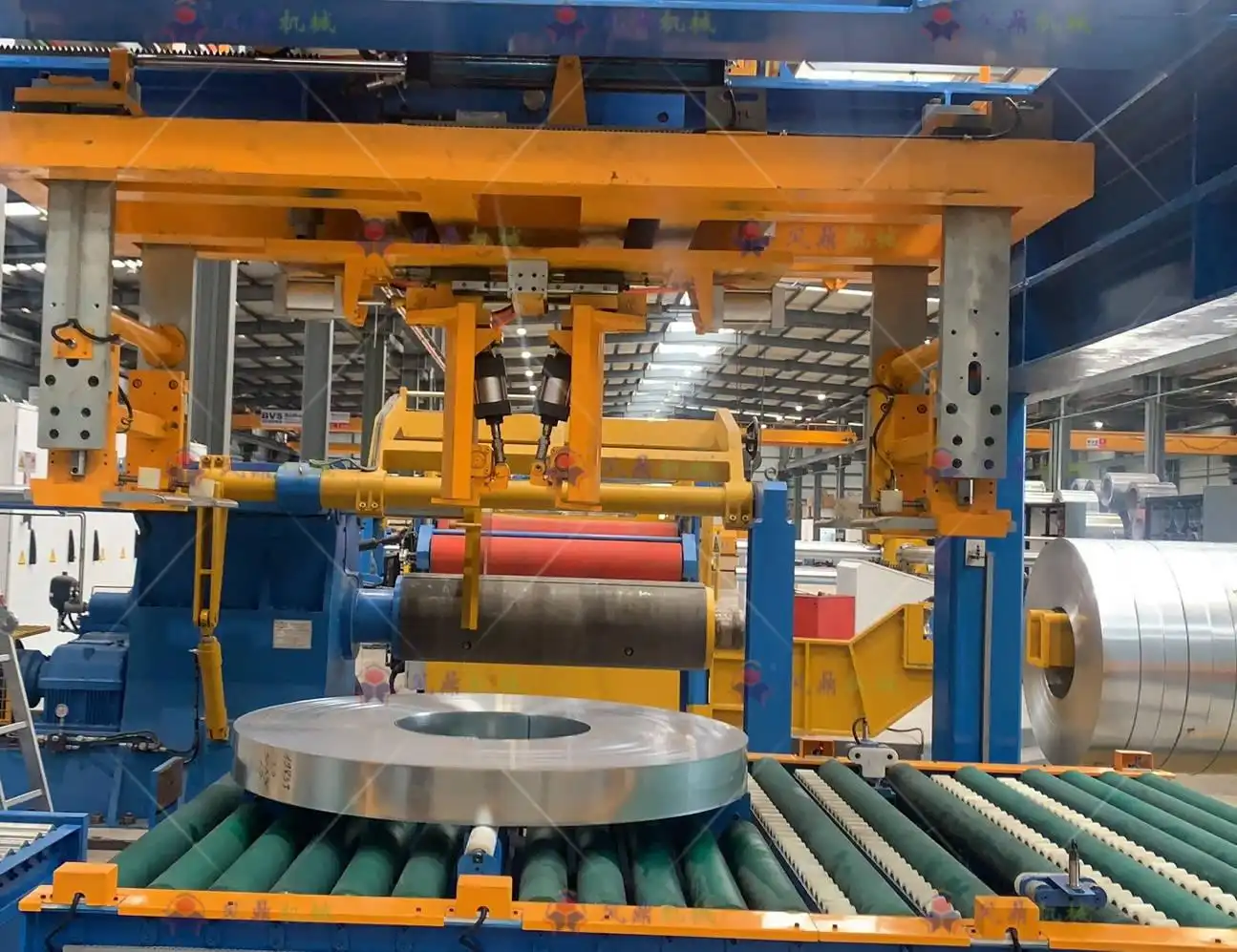
I have walked through many steel plants and listened to the concerns of owners and managers. The story is often the same: they feel their packaging line is a bottleneck, a weak link in an otherwise strong production chain. I started SHJLPACK to share the knowledge I’ve gained over the decades, helping leaders like you find total solutions, not just single machines. Let's dig deeper into the specific problems you face in Brazil and explore the practical, effective solutions that can transform your packaging operations from a liability into a high-performing asset.
What specific challenges do Brazil's industrial environments pose for coil packaging machinery?
You might have purchased a packaging machine that looked great on paper. The specifications were solid, and the price was right. But after a few months of operation in your Brazilian facility, problems start to appear. The machine, which was designed for a standard factory floor, simply isn't built for the reality of your environment. The constant humidity begins to cause rust on vital components. The pervasive dust from production grinds away at bearings and chains. The heat causes electrical cabinets to overheat, leading to mysterious shutdowns. You are left with a machine that fails when you need it most, causing delays that ripple through your entire supply chain.
Brazil's industrial environments challenge machinery with high humidity leading to corrosion, abrasive dust causing mechanical wear, and high ambient temperatures that overheat electrical systems and degrade lubricants. These three factors work together to accelerate the aging of your equipment and drastically increase the frequency of unplanned downtime. Addressing them requires more than just standard maintenance; it requires a machine designed from the ground up for these conditions.
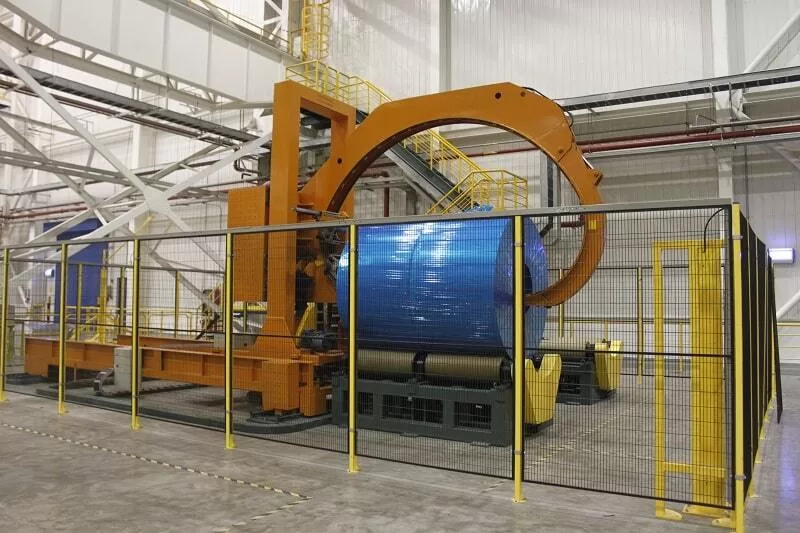
In my early days as an engineer, I was sent to a client's site where a new wrapping machine was failing constantly. The issue wasn't a flaw in the core design, but its suitability for the location. It was a coastal plant with high salt content in the air, combined with industrial dust. We learned a valuable lesson: the environment is as important as the machine's function. This experience shaped my philosophy at SHJLPACK. We don’t just sell machines; we analyze the environment to provide a solution that lasts.
The Silent Killer: Humidity and Corrosion
Humidity is the most persistent enemy of steel and machinery in many parts of Brazil. It attacks on two fronts. First, it can damage your finished steel coils, causing surface rust that can lead to customer rejection. Second, it corrodes the packaging machine itself. Chains, sprockets, frames, and fasteners made from standard carbon steel will quickly show signs of rust. This isn't just a cosmetic issue. Corrosion weakens parts, causes them to seize up, and ultimately leads to mechanical failure. Electrical connections are also vulnerable. Moisture in control panels can cause short circuits and component failure, leading to some of the most difficult-to-diagnose problems. The solution is to be proactive in material selection. We specify stainless steel for key components that are in direct contact with the product or exposed to the most moisture. For structural parts, we use high-quality industrial coatings or hot-dip galvanization to create a durable barrier against the humid air. It adds to the initial cost, but it pays for itself many times over in reduced maintenance and longer equipment life.
The Gritty Reality: Dust and Debris
A steel mill is a dusty place. This dust, often containing fine metallic and abrasive particles, is a serious threat to the moving parts of any machine. It works its way into bearings, wearing them down from the inside. It accumulates on chains and gears, mixing with lubricant to form a grinding paste that accelerates wear. It can also block sensors, causing the machine's control system to make errors. A simple photoelectric sensor that can't see through a layer of dust can bring the entire line to a halt. To combat this, we use sealed bearings that keep contaminants out. We design protective enclosures for sensitive areas and ensure control cabinets have a high IP (Ingress Protection) rating, like IP65, which means they are completely sealed against dust. In very dusty environments, we can even design cabinets with a positive air pressure system, which constantly pushes clean air out, preventing any dust from getting in.
The Overlooked Factor: Heat and Temperature Swings
High ambient temperatures in Brazil put a lot of stress on electrical and electronic components. PLCs, Variable Frequency Drives (VFDs), and even simple power supplies generate their own heat during operation. When the air around them is already hot, they can easily overheat and fail. This is why you see control cabinets with their doors propped open in some plants—a very unsafe practice. A proper design accounts for the ambient heat load. This means using larger electrical enclosures to allow for better air circulation, installing industrial-grade cooling fans or even air conditioning units for the cabinets, and selecting components that are rated to operate reliably at higher temperatures. Lubricants are also affected by heat. Standard grease can break down or become too thin at high temperatures, failing to protect moving parts. Using the correct high-temperature lubricants is a simple but critical detail.
| Challenge | Standard Approach | Robust Solution for Brazil |
|---|---|---|
| Humidity | Standard carbon steel parts | Stainless steel, hot-dip galvanizing, epoxy coatings |
| Dust | Open bearings, standard enclosures | Sealed bearings, IP65-rated cabinets, protective covers |
| Heat | Standard-size control cabinets | Oversized cabinets, cooling fans, high-temp components |
| Corrosion | Basic paint | Multi-layer marine-grade paint systems |
How can modernizing equipment combat aging infrastructure and rising maintenance costs?
If your packaging line is over 15 years old, you know the struggle. It was once a reliable part of your operation, but now it feels like a constant source of problems. Breakdowns are more frequent and less predictable. Your maintenance team spends more time patching up old equipment than performing preventative work. Finding spare parts for obsolete components becomes a treasure hunt, often leading to long and costly downtimes. You are spending more and more money just to keep the old machine running, and its inefficiency is a hidden tax on your entire production output. This directly hurts your profitability and makes it impossible to plan for stable production.
Modernizing your equipment is a direct solution to this problem. A new, automated packaging line combats aging infrastructure by replacing worn-out systems with durable, high-efficiency components. It introduces precise PLC controls that eliminate the inconsistencies of older mechanical or relay-logic systems. Modern machines are also built with a modular design, which simplifies troubleshooting and repairs. When a component fails, you can often swap out an entire module quickly, getting the line back up and running in a fraction of the time. This strategic upgrade directly and significantly lowers your daily maintenance costs and boosts reliability.
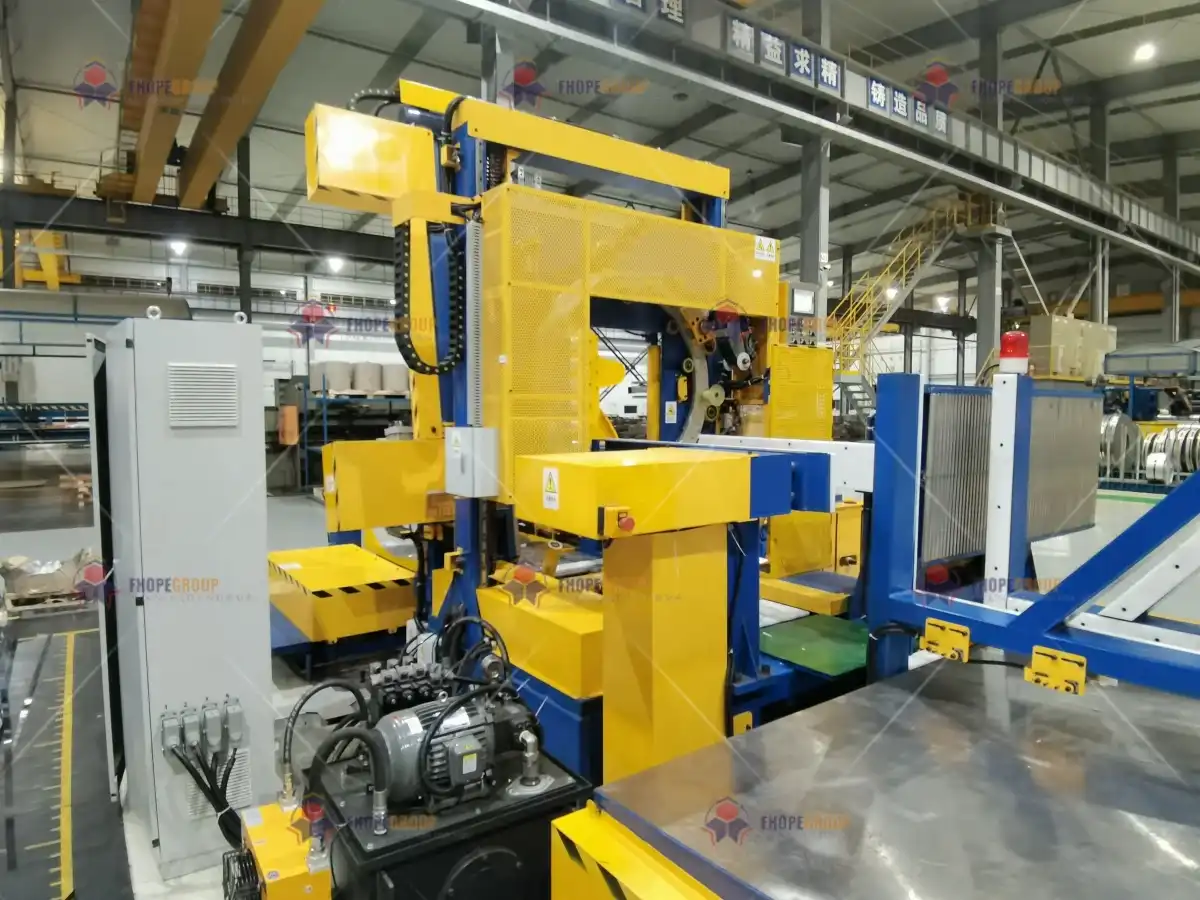
I remember a conversation with a steel mill owner, a man much like Javier, who was very proud of keeping his 20-year-old strapping machine running. He saw it as a sign of a great maintenance team. I agreed his team was skilled, but I asked him to calculate the true cost. We added up the emergency maintenance hours, the cost of custom-machined spare parts, the production lost during downtime, and the energy consumed by the old, inefficient motor. The number was shocking. It turned out he could have paid for a new, far more efficient machine in less than three years with those hidden costs alone. He made the investment, and a year later, he told me it was the best decision he’d made. His maintenance team could finally focus on preventative tasks across the plant.
Moving From Reactive to Proactive Maintenance
Old machines force you into a reactive maintenance cycle: something breaks, and you fix it. This is inherently inefficient and stressful. Modern equipment is designed for a proactive, predictive approach. It is equipped with sensors that act as a nervous system for the machine. These sensors monitor key indicators in real-time, such as motor vibration, bearing temperature, and electrical current draw. This data is analyzed by the PLC. The system can then alert your team to a potential problem long before it causes a failure. For example, you might get an alert that says, "Vibration on Conveyor Motor #2 has increased by 15% this week. Recommend inspection." This allows you to schedule maintenance during a planned shutdown, rather than having the line fail during a critical production run. This is a fundamental shift that moves you toward your goal of 95% equipment uptime.
The True Cost of "Saving Money" with Old Machines
The initial purchase price of a new machine can seem high, but it's only one part of the total cost of ownership. A pragmatic business leader must look at the full picture. Old equipment often has a much higher lifetime cost, even though its purchase price is zero.
| Cost Factor | Old Machine (15+ Years) | Modern SHJLPACK Machine |
|---|---|---|
| Annual Maintenance | High and unpredictable | Low and predictable |
| Downtime Costs | Significant; frequent unplanned stops | Minimal; planned maintenance |
| Spare Parts | Hard to find, expensive, long lead times | Readily available, standardized parts |
| Energy Consumption | High; inefficient motors | Low; high-efficiency motors, VFDs |
| Operator Safety | Higher risk; fewer safety features | Low risk; modern guards, sensors |
| Packaging Quality | Inconsistent | Consistent and high-quality |
| Total 5-Year Cost | Often higher than a new machine | Lower due to operational savings |
Benefits Beyond the Obvious
The decision to modernize brings benefits that go beyond just lower maintenance bills. New machines are designed to meet the latest safety standards, with features like light curtains, safety interlocks, and comprehensive physical guarding that protect your team. This reduces the risk of accidents and lowers associated costs like insurance premiums. The quality and consistency of the packaging itself are also much higher, leading to better product protection and greater customer satisfaction. Finally, modern machines with intuitive HMI (Human-Machine Interface) touch screens are much easier for new operators to learn and use. This reduces training time and helps you deal with labor shortages or workforce turnover more effectively.
How does automation in coil packaging contribute to reducing energy costs and improving safety?
Energy costs are a major concern for every steel mill owner. Prices for electricity are volatile and seem to only go up, directly impacting your production costs. At the same time, you are responsible for the safety of every person in your plant. The area around a coil packaging line, with its heavy coils and powerful machinery, can be one of the most hazardous. It can feel like these two goals—reducing energy use and improving safety—are in conflict. You might think that adding more automated machinery will inevitably lead to a higher electricity bill and that more moving parts create more risks.
However, modern, intelligent automation is specifically designed to solve both problems at once. Automation contributes to reducing energy costs by using high-efficiency motors and variable frequency drives (VFDs) that precisely control power consumption, drawing energy only when it is needed for a task. It dramatically improves safety by taking over the most repetitive, strenuous, and hazardous jobs, such as manually feeding strapping material or lifting heavy packaging materials. This removes your employees from harm's way, creating a leaner, safer, and more cost-effective operation.
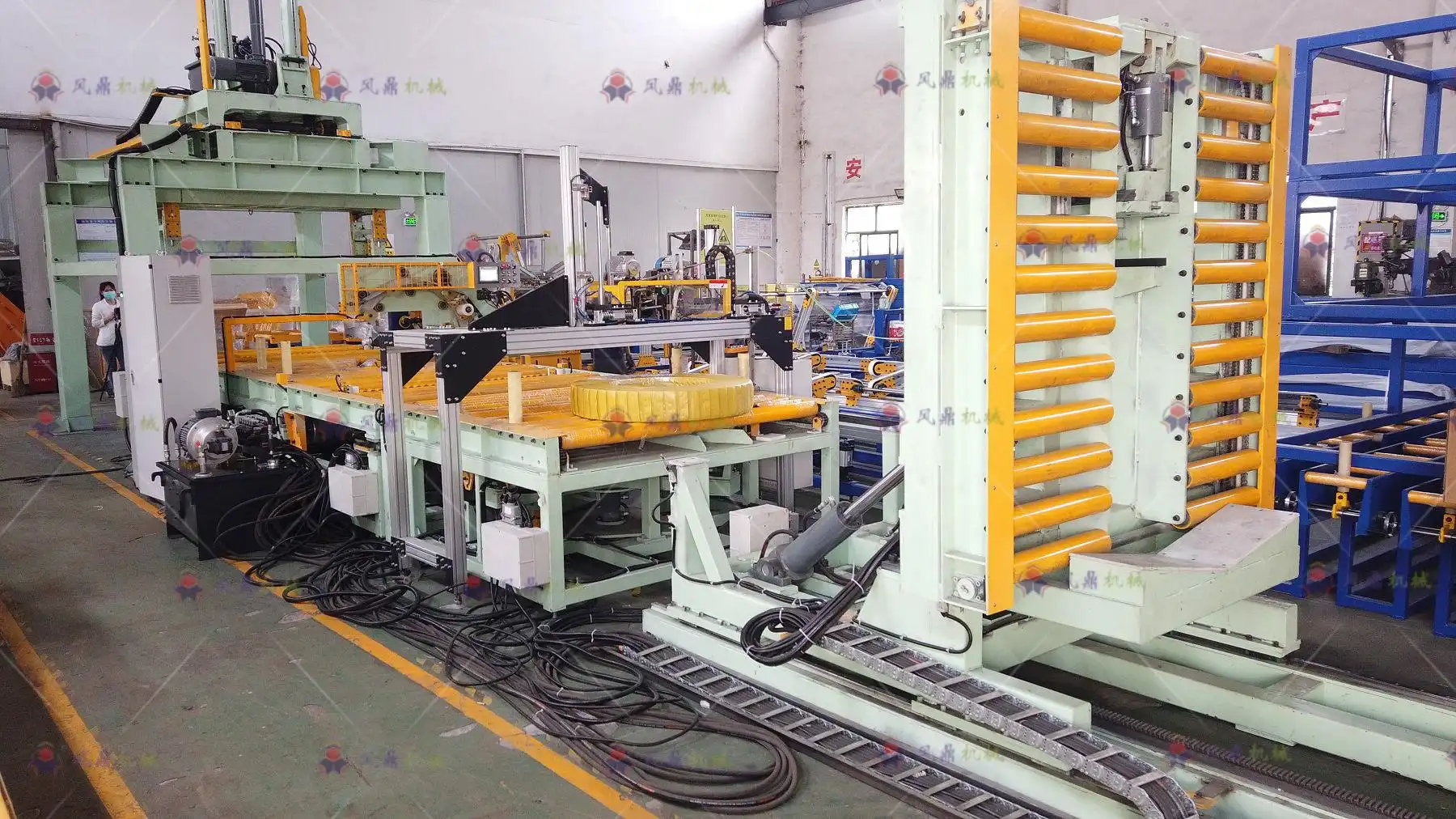
When I started my own factory, one of my first principles was to automate any task that was "dull, dirty, or dangerous." This wasn't just about efficiency; it was about respect for my team. I saw how manual strapping could lead to back injuries and how handling sharp metal edges was a constant risk. By automating these processes, we not only created a safer workplace but also discovered a hidden benefit: the machines were far more consistent and used materials more efficiently than any human operator could. The energy savings were a welcome bonus. This practical experience is built into every SHJLPACK solution we design.
Smart Energy Consumption
An old packaging line is often a huge energy waster. Its main motor likely runs at full speed all the time, even when the machine is idle between coils. It's like leaving a car's engine revving at a red light. Modern automated systems are much smarter. The key technology here is the Variable Frequency Drive (VFD). A VFD is a motor controller that adjusts the motor's speed—and thus its power draw—to precisely match the needs of the task at hand. When a coil is being moved into place, the conveyor motor speeds up. When it stops for wrapping, the conveyor motor slows down or stops completely, using almost no power. The wrapping motor itself will ramp up smoothly instead of drawing a huge surge of current on startup. This granular control can reduce the motor's energy consumption by 20-50%, depending on the application. When you add this up across all the motors in a packaging line, running 24/7, the savings on your electricity bill are substantial and directly contribute to your goal of lowering unit production costs.
Engineering Safety into the System
The most effective way to prevent workplace accidents is to design the hazard out of the process. Automation excels at this. Think about the typical manual packaging process. An operator has to bend and lift heavy rolls of wrapping material. They work close to a spinning coil and a powerful strapping tool. These are high-risk activities. A fully automated line eliminates them. The system can feature automatic coil loading and unloading, robotic arms that precisely place corner protectors, and automated strapping heads that feed, tension, and seal the straps without any human intervention. We surround the entire operating area with safety fencing and light curtains. If a person crosses the light curtain while the machine is active, the system immediately and safely stops. This multi-layered approach to safety doesn't just meet regulations; it creates a fundamentally safer work environment.
The Hidden Financial Gains of a Safer Workplace
A safer workplace is a more profitable one. The costs of an accident go far beyond immediate medical care. They include lost production time, potential equipment damage, administrative time for incident investigation, and higher insurance premiums. By automating hazardous tasks, you are making a direct investment in reducing these potential costs.
| Task | Manual Method Risk | Automated Solution | Financial Impact |
|---|---|---|---|
| Coil Upending | High risk of crushing injury | Automated upender with safety interlocks | Reduces liability & insurance costs |
| Strapping | Repetitive strain, cuts from strap | Automated strapping head | Eliminates lost-time injuries |
| Labeling | Awkward reaching, working near moving parts | Automatic print-and-apply labeler | Increases productivity and safety |
| Material Loading | Back injuries from heavy lifting | Automated material loading systems | Lowers worker compensation claims |
What role does data and digitalization play in optimizing the coil packaging line?
As a steel mill owner, you rely on information to make strategic decisions. Yet, for many, the packaging line is a "black box." You know how many coils go in and how many come out, but you lack detailed insight into the process itself. You might sense there are inefficiencies and bottlenecks, but you can't prove it with data. You make decisions about maintenance schedules and operator assignments based on experience and gut feelings. This lack of visibility makes it difficult to truly optimize performance, control costs, and accurately predict your output. You feel like you are operating in the dark, unable to unlock the full potential of your facility.
Data and digitalization are the solution. They act like a powerful floodlight, illuminating every aspect of your packaging operation. By implementing IoT (Internet of Things) sensors and connecting your packaging line to a central data platform, you can optimize your entire process. These sensors collect real-time data on everything from machine cycle times and material consumption to motor temperature and vibration. This information is then fed into a Manufacturing Execution System (MES) or a local dashboard, giving you complete production visibility. This allows you to move to a predictive maintenance model and make crucial operational decisions based on hard facts, not guesswork.
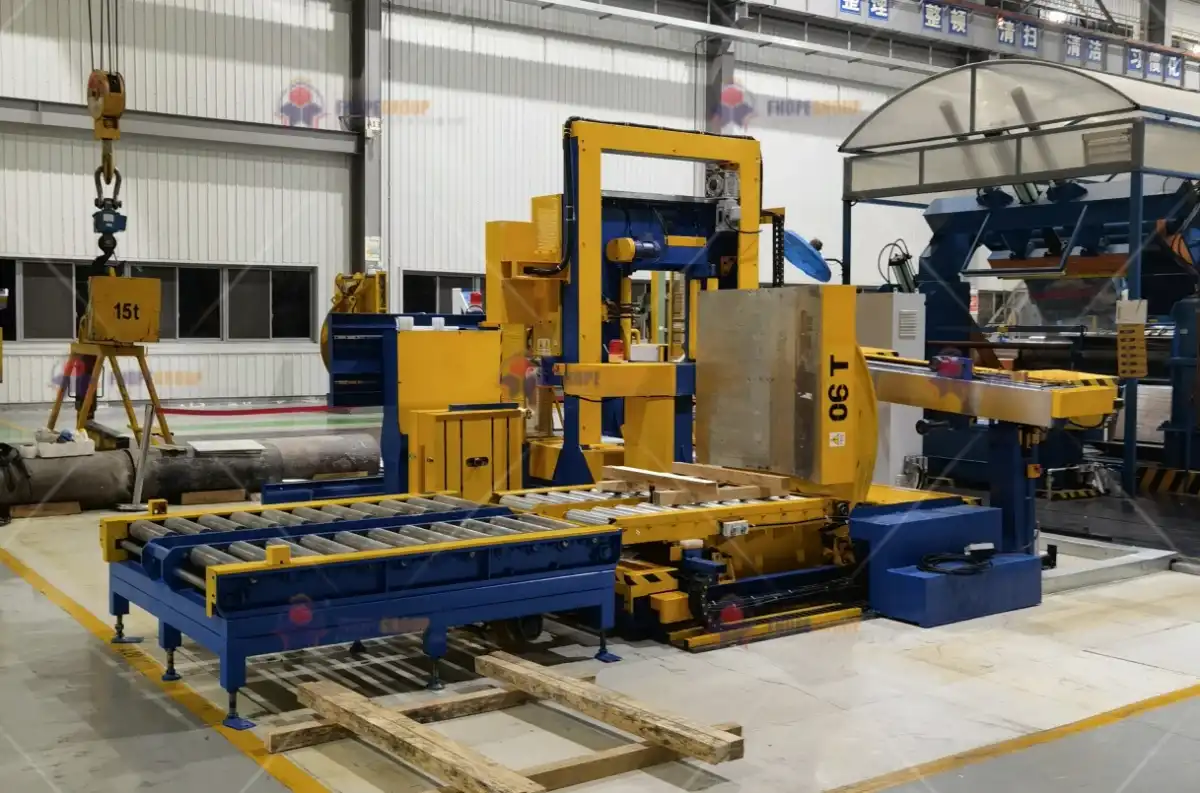
My journey from engineer to factory owner was driven by a passion for process improvement. I learned early on that what you can't measure, you can't improve. When we established SHJLPACK, I insisted that our machines be "data-ready." We build them with the sensors and connectivity needed to integrate into a modern, digital factory. I've seen clients use this data to achieve incredible results—slashing downtime, reducing waste, and reassigning labor to more valuable tasks. For a forward-thinking leader like Javier, who has already invested in a smart scheduling platform, connecting a digital-ready packaging line is the logical next step to achieving total operational control.
From Raw Data to Actionable Insights
A modern packaging line is a rich source of data. The key is to turn that raw data into insights you can act on. Our systems are designed to track hundreds of data points. For example, we can monitor the exact cycle time for every coil, the amount of stretch film used, the tension of each strap, and the operational temperature of every motor. This data is logged and analyzed. Instead of waiting for a breakdown, the system can send an alert based on trends. For instance, if the time it takes for the strapping head to cycle increases by half a second over a week, it could indicate a pneumatic leak or mechanical wear. The system can flag this for your maintenance team, allowing them to fix a small issue before it becomes a big problem. This is how you concretely achieve a goal like 95% equipment uptime. The machine tells you what it needs before it fails.
Integration with Your Factory's Brain (MES/ERP)
A truly smart packaging line does not operate in isolation. It should be an integrated part of your plant's central nervous system—your Manufacturing Execution System (MES) or Enterprise Resource Planning (ERP) system. This integration allows for a two-way flow of information. Your MES can send an order down to the packaging line, telling it that the next coil is a specific dimension and requires a certain packaging recipe (e.g., three layers of film, four radial straps). The packaging line PLC then automatically adjusts all its settings—conveyor speed, wrapping rotation, strap positions—without any operator input. Once the coil is finished, the packaging line reports back to the MES, confirming the completion of the order and providing data on material usage and cycle time. This seamless communication eliminates human error, ensures perfect packaging quality every time, and provides real-time data for your production scheduling and inventory management.
The Path to a Fully Visualized Operation
Digitalization gives you the power to see your entire operation from a single screen. Imagine a dashboard on your computer or tablet that displays the key performance indicators (KPIs) for your packaging line in real-time. You can see your Overall Equipment Effectiveness (OEE), your throughput in coils per hour, and your material cost per ton of steel packaged. You can drill down to see the performance of an individual shift or diagnose the most common reason for micro-stoppages. This level of visibility is transformative. It allows you to identify trends, benchmark performance, and make informed, strategic decisions to continuously improve efficiency and lower costs.
| Key Performance Indicator (KPI) | How It's Measured | Benefit for Your Mill |
|---|---|---|
| Overall Equipment Effectiveness (OEE) | (Availability x Performance x Quality) | A single, powerful metric to track overall efficiency. |
| Coils Per Hour | Real-time cycle time tracking | Measures actual throughput against targets. |
| Mean Time Between Failures (MTBF) | System logs all faults and uptime | Tracks reliability and the impact of maintenance. |
| Material Consumption per Coil | Sensors on film and strap dispensers | Allows for precise cost control and waste reduction. |
| Energy Usage (kWh/coil) | Power monitors on main drives | Helps you track and manage your energy reduction goals. |
Conclusion
Overcoming Brazil's harsh conditions requires more than just machinery. It needs a robust, automated, and data-driven packaging strategy. This is not a cost, but a powerful investment in your future.





